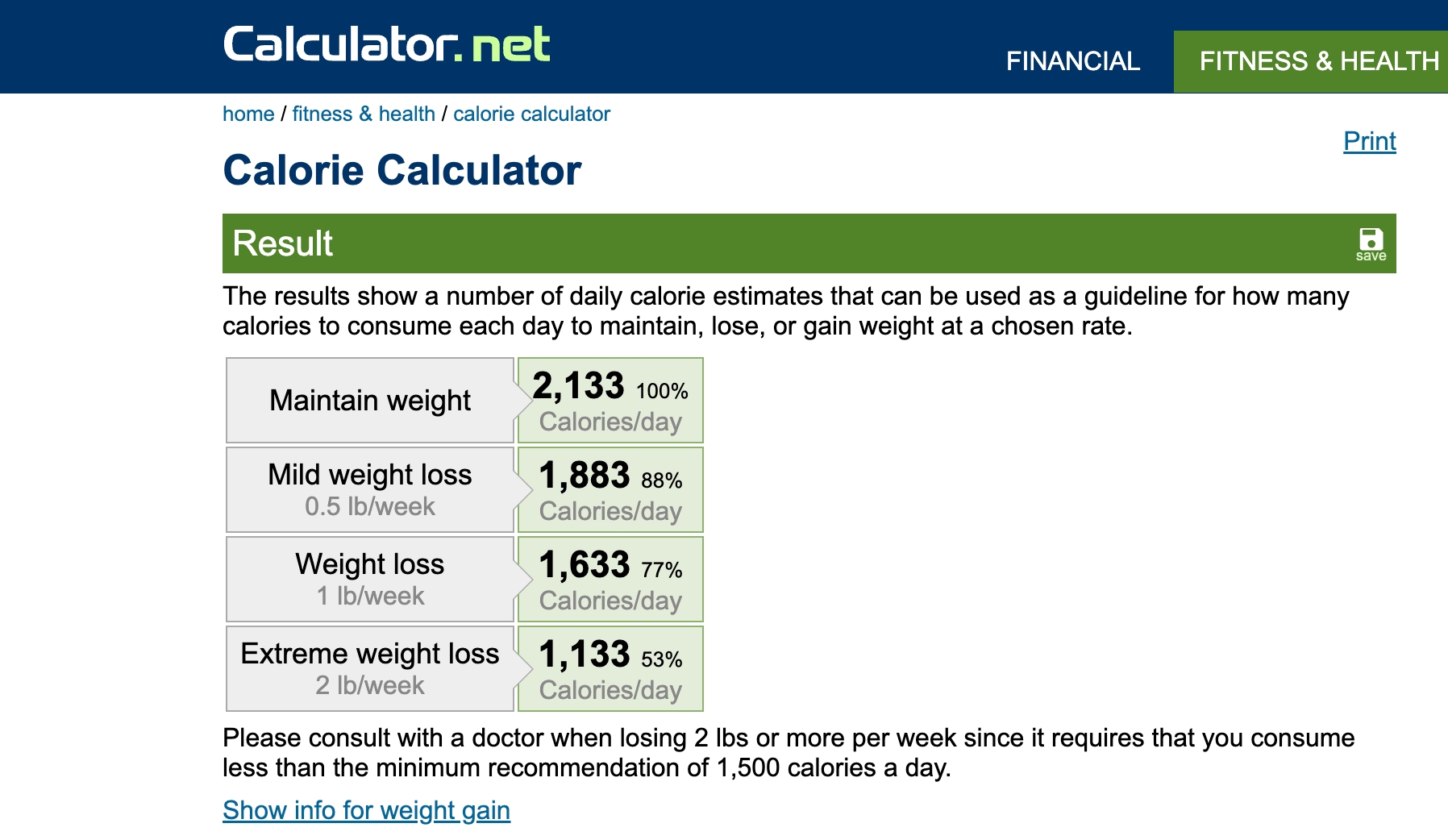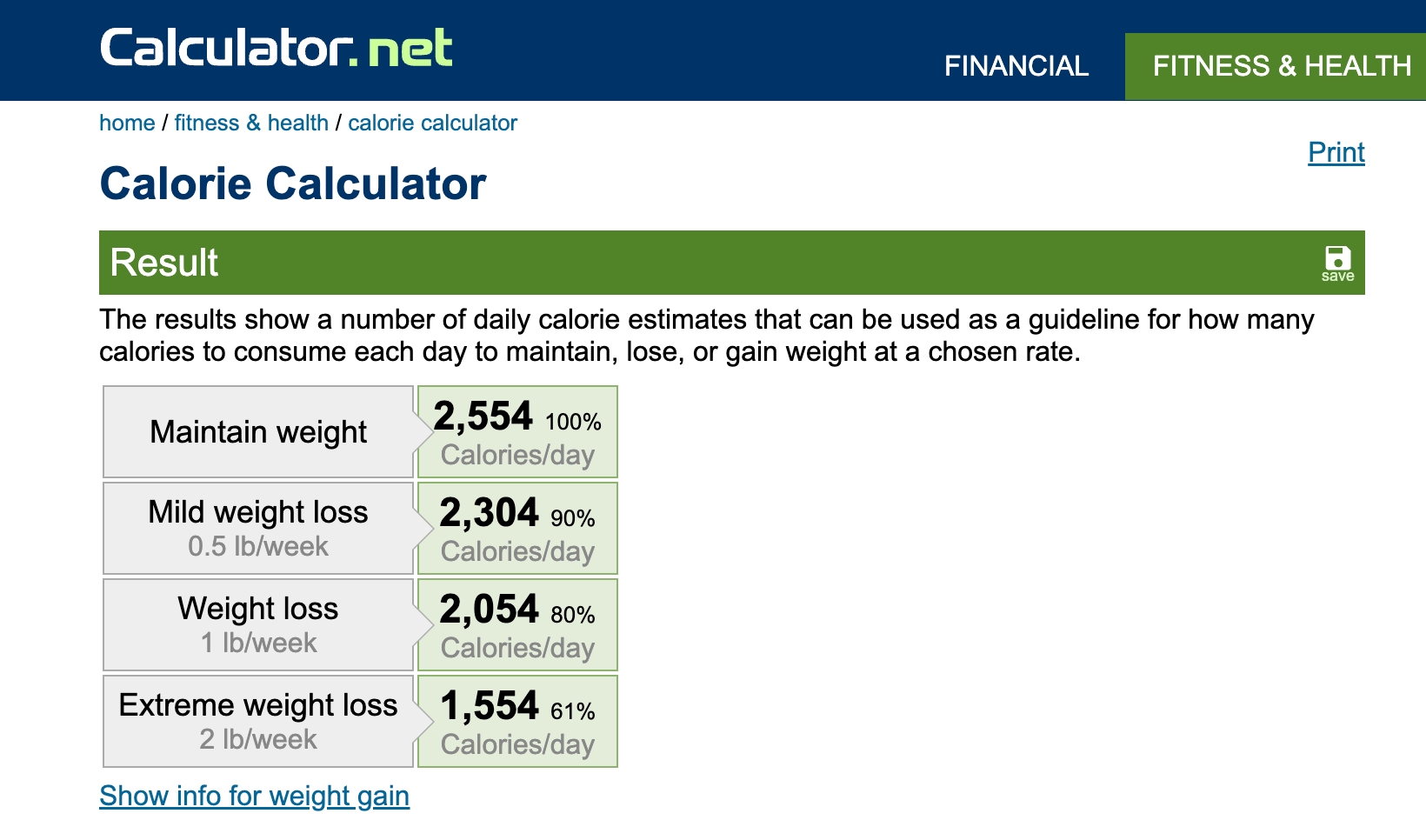A small tool every day, today I want to share how to calculate a person’s daily calorie needs

Translated Main Text (Meeting the Requirements of Overseas Independent Station Copywriting)
A New Perspective on Daily Calorie Management: Calorie Calculator
As a team that has long been operating an overseas independent tool review blog, we are always looking for practical tools that can really help readers manage their diet and weight. Today, we are doing an in – depth review of a very intuitive daily calorie requirement calculator – the Calorie Calculator on Calculator.net. Through it, you can more accurately answer the question “How many calories do I need per day to maintain my current weight, lose fat, or gain muscle?”, and also learn how to turn these values into executable daily diet plans.
The Core Value of the Tool: Transparent and Flexible, Accurately Adapting to Different Goals
This calculator is based on mainstream calorie and metabolism models. By simply inputting your age, gender, height, weight, and daily activity level (such as sedentary, lightly active, moderately active, highly active, etc.), you can quickly get:
- The Basal Total Daily Energy Expenditure (TDEE): The number of calories you need per day to maintain your current weight.
- The calorie range for different goals: Specific suggestions for calorie intake when your goal is to lose fat, gain muscle, or maintain your weight.
For us (and our readers), its greatest advantage lies in its transparency and flexibility. All input data can be adjusted at any time, and the results are updated in real – time, which makes it convenient to quickly compare the differences between the plans of “maintaining the status quo”, “losing fat”, or “gaining muscle”. In addition, it can also help you understand why people with the “same weight and the same activity level” may need significantly different numbers of calories per day? And formulate a more personalized diet plan accordingly.
The Usage Process: From Data Input to the Implementation of the Diet Plan
- Input Basic Information: Your gender, age, height, weight, and daily activity level (for example: sitting at a desk all day / lightly active / moderately exercising / engaging in high – intensity training).
- Set Goals and Time Frames: Choose “maintain weight”, “lose fat”, or “gain muscle”. The tool will give you a baseline value for the calories needed to maintain your weight and provide adjustment suggestions for the target.
- View and Understand the Results: In addition to the total daily calories, some versions will also provide a rough distribution suggestion of macronutrients (such as the proportion of protein / carbohydrates / fats), and may even refine the calorie distribution for each meal.
- Translate into a Daily Plan: Divide the daily calorie goal into breakfast, lunch, dinner, and snacks. Combine your personal taste and life rhythm to formulate a sustainable diet table (for example, use a mobile app to record or write a diet diary to track).
A Comparison of the Calorie Needs of Europeans and Americans of Different Ages for Maintaining Weight (Reference)
Taking “maintaining the current weight” as the goal, the common calorie requirement ranges for different age groups are as follows (affected by factors such as activity level, gender, etc.):
- 15 years old: In the growth and development stage, with usually a relatively high activity level, the calorie requirement for maintaining weight is about 1100 – 2200 kilocalories (gender, height, and training intensity have a significant impact).
- 20 years old: After puberty, entering a stable physical fitness stage, the calorie requirement for maintaining weight is mostly 1600 – 2600 kilocalories (if you often participate in high – intensity exercise, the value may be higher).
- 30 years old: In the early stage of adulthood, if the daily activity is relatively high, the calorie requirement for maintaining weight is about 1500 – 2500 kilocalories; for those who sit for long periods or have high work pressure, the range may be lower.
- 50 years old: With a gradually declining metabolism and significant changes in muscle mass, the calorie requirement for maintaining weight is commonly in the range of 1300 – 2300 kilocalories (it still needs to be adjusted according to the activity level and health goals).
15 years old:

20 years old:

30 years old:

50 years old:

Note: The above are common ranges. The actual requirements depend on your personal height, weight, gender, activity level, and goals. By inputting each item in the tool, you can clearly see the calorie differences among people of the same age group under the same lifestyle.
If you want to know how to check the calorie count of food, please check how many calories a pizza has
The Reasonable Range and Key Points of Daily Calorie Intake
- The “Reasonable Range” for Maintaining Weight: It is usually based on the product of the basal metabolic rate (BMR) and the activity factor (such as 1.2 for sedentary, 1.55 for moderately active, 1.725 for highly active). For most adults in daily life, if there are no special health problems, the calorie requirement for maintaining weight is commonly in the range of 2000 – 2600 kilocalories (the specific value varies depending on gender, age, and body type).
- The Risks of Excessive Calorie Intake: Consistently consuming more calories than the maintenance level will lead to fat accumulation and an increased risk of related health problems. The countermeasures include gradually reducing calorie intake, increasing activity level, and establishing a sustainable diet monitoring habit.
- The Risks of Insufficient Calorie Intake: If you consume fewer calories than the maintenance level for a long time, it may cause a decline in metabolism, muscle loss, insufficient energy, and malnutrition. It is recommended to adjust the calorie goal gradually under professional guidance, ensure sufficient protein intake, have a balanced diet, and combine with strength training to maintain muscle mass.
Practical Suggestions: When translating the calorie goal into a daily diet, prioritize high – nutrient – density foods (such as vegetables, fruits, whole grains, high – quality protein, and healthy fats). Ensure that protein is evenly distributed, carbohydrates come from complex sources (such as oats and brown rice), and fats are mainly unsaturated fats (such as olive oil and nuts). If necessary, use daily recording tools (mobile apps or diaries) to track your progress to ensure the sustainability of the plan.